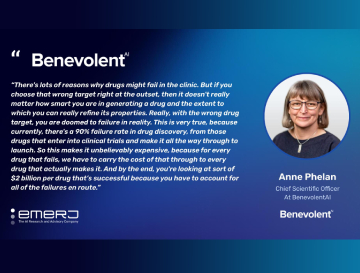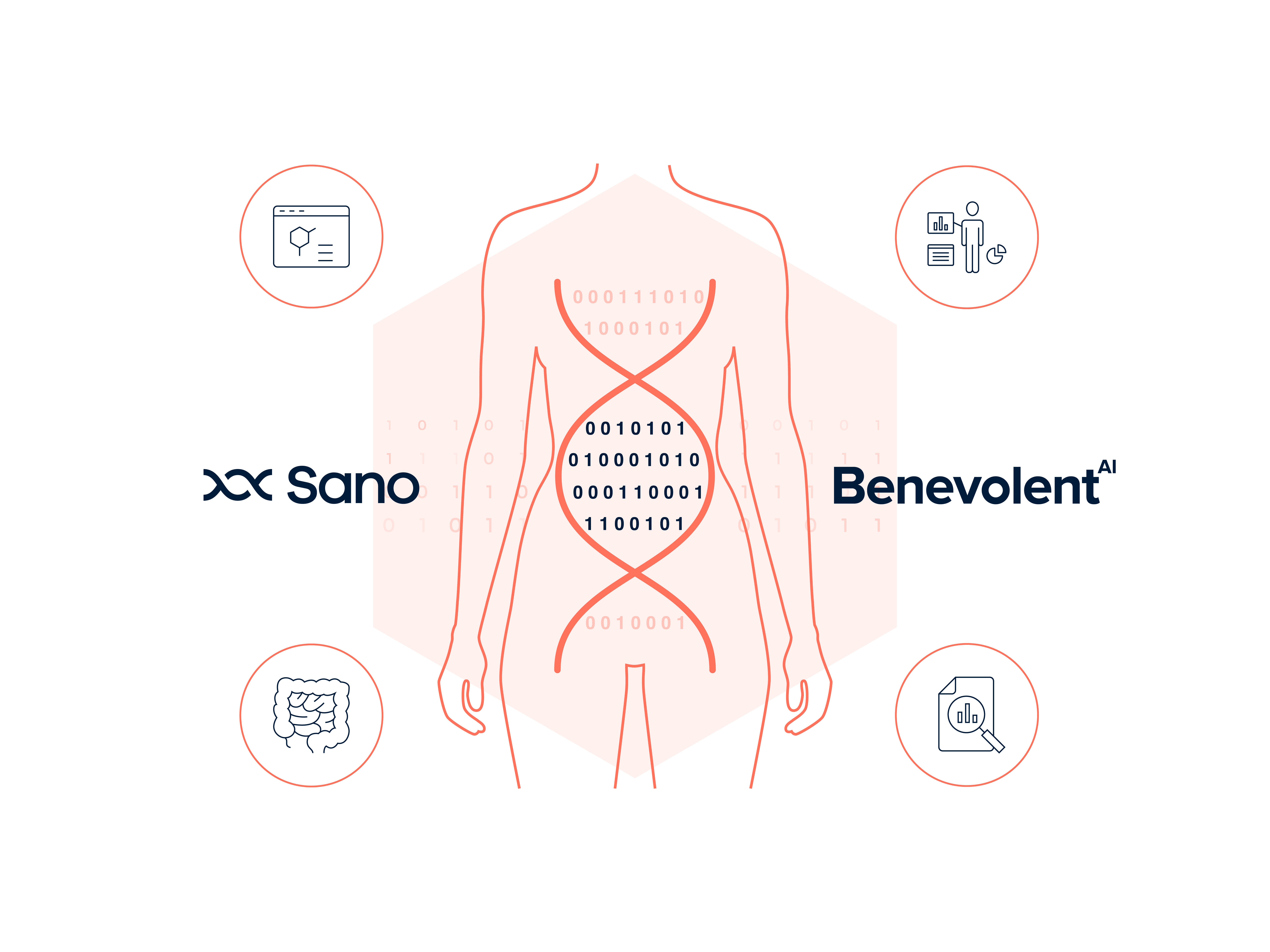Earlier this month we announced our partnership with the University of California San Diego, supported by the Angioma Alliance charity, to collaborate on a new approach to develop non-invasive therapeutic treatments for cerebral cavernous malformations (CCM).
This week we caught up with Andrea Taddei, Senior Principal Scientist at BenevolentAI, who shared insight into his work to use AI to identify new targets associated with this rare and complex disease for which the only current treatment option is brain surgery.
At Benevolent, Andrea leads a multidisciplinary team on several drug discovery programmes from target identification through application of artificial intelligence platforms to selection of candidates for chemistry optimisation. Like many of our drug discoverers who transitioned to Benevolent from a traditional scientific or pharmaceutical background, Andrea saw a way of translating AI and ML research to impact our society by improving the condition of patients living with devastating diseases.
Q: Can you give us an introduction to CCM disease?
A: Cerebral Cavernous Malformations (CCMs) are vascular anomalies that arise in the central nervous system of approximately 1 out of 200 individuals. In these patients, blood vessels in the brain or spinal cord enlarge and form lesions resembling mulberries, where blood flows very slowly and the vascular wall is highly permeable and fragile and can cause haemorrhage.
This can lead to multiple consequences from headaches to epileptic seizures, hemiparesis, cardiac and respiratory deficits and hemorrhagic stroke. Severe brain hemorrhages can result in death. CCM lesions are due to mutations in one of 3 genes (called CCM1/KRIT1, CCM2 and CCM3/PDCD10) which can happen heritably, in 20% of cases called familial CCMs, or sporadically, in 80% of the cases. While sporadic patients usually display one single lesion, a single familial patient can carry hundreds of lesions, with 5 to 7 new lesions developing every year.
Q: What are the current treatment options?
A: At present, CCM disease has no treatment. Therapy is based on analgesics and anti-epileptics to contain the symptoms, associated with monitoring of the lesions via imaging techniques such as magnetic resonance imaging (MRI). After multiple hemorrhages or severe symptoms (cardiac or respiratory instability) occur, lesions are removed via brain surgery. However, this is not always possible, as cavernous malformations in deeper regions of the brain or in the brain stem might not be accessible.
As a consequence, there is a huge unmet need for patients who are living their lives hoping that the lesions don't progress.
Q: What are the benefits of applying new technologies to CCM research?
A number of important scientific papers on the disease have been published in recent years, as the vascular scientific community has developed an increasing interest in understanding the biology around CCM lesion development. However, knowledge around the disease is still limited.
The Benevolent Knowledge Graph allows our scientists to more accurately explore what has been discovered in the context of blood vessel biology in physiological and pathological conditions. Artificial intelligence traverses all available information to gain more insight into public and proprietary CCM datasets and our intention is to use this technology to produce new hypotheses for therapeutic targets to design drugs for CCM patients.
I strongly believe that for a pathology as complex as CCM, with multiple mechanisms and signalling pathways driving disease development, it is crucial to work with a holistic mindset and draw upon as much information as possible to think unconventionally and laterally in order to design innovative treatment options.
Q: What influenced BenevolentAI’s decision to work on CCM?
A: Complex rare diseases are often neglected in traditional pharmaceutical models due to difficulties in combining the limited and diverse amount of information available to draw a clear understandable picture. At Benevolent, our AI platform enables researchers to draw meaning from complex and multimodal datasets to help in the search for medicines to treat disease. We have built the right data foundations, which we can interrogate by using the right tech, utilising the right scientific capabilities: all of which empowers us to focus on diseases in areas of high unmet medical need to produce new insight. The final ingredient is collaboration, which ultimately is the key to unlocking the potential of AI in drug discovery.
Back to blog post and videos




